Embedded Systems
Data is displayed for academic year: 2023./2024.
Lectures
Course Description
Embedded systems and their applications. Microcontroller architectures. Internal buses, memories and integrated peripherals. Families of microprocessors and microcontrollers. Embedded system design. Power supply. Clock and reset generation and distribution. Input-output devices. Mixed signal, high speed and low power design. Electromechanical integration. Design tools, simulators, emulators, logic analyzers. Software for embedded systems. Microcontroller programming in C language. Hardware initialization. Interrupt handling. Working with libraries. High level programming. Software design tools. Soft microcontroller cores. Field programmable gate arrays as implementation platform for embedded systems. Embedded system debugging and testing. Benchmarks. Examples of embedded systems.
Study Programmes
University undergraduate
[FER3-EN] Computing - study
Elective Courses
(6. semester)
[FER3-EN] Electrical Engineering and Information Technology - study
Elective Courses
(6. semester)
University graduate
[FER3-EN] Control Systems and Robotics - profile
Core-elective course
(2. semester)
Learning Outcomes
- define embedded system, its elements and architecture
- classify embedded system components based on signal type, integration level, realization and functionality
- describe tools for funckional debugging and testing of embedded systems
- analyze embedded computer system
- apply peripherals which are built in microcontrollers
- develop hardware and software for embedded computer system with a microcontroller
- apply programmable logic and field programmable gate arrays (FPGA)
- design embedded computer system using FPGA
Forms of Teaching
Lectures
-
Laboratory-
Grading Method
| Continuous Assessment | Exam | |||||
|---|---|---|---|---|---|---|
| Type | Threshold | Percent of Grade | Threshold | Percent of Grade | ||
| Laboratory Exercises | 50 % | 24 % | 50 % | 24 % | ||
| Mid Term Exam: Written | 0 % | 33 % | 0 % | |||
| Final Exam: Written | 0 % | 33 % | ||||
| Final Exam: Oral | 10 % | |||||
| Exam: Written | 50 % | 66 % | ||||
| Exam: Oral | 10 % | |||||
Comment:
The student is allowed to approach the oral exam if minimum 50% is gained on the midterm and written part of the final exam. The student is allowed to approach the oral exam if minimum 50% is gained on the written part of the exam. Oral exam is not mandatory.
Week by Week Schedule
- Concept of embedded systems, Structure of basic computer system: CPU, memory, I/O, bus, Microprocessors and microcontrollers, Microcontroller families (4-bit, 8-bit, 16-bit, 32-bit), Processor core, Integrated peripherals, Interrupts, polling, interrupt structures: vectored, prioritied, Direct memory access, Memory architectures, hierarchies, caches
- A/D and D/A interfacing, Mixed signal design
- Mixed signal design
- Power supply, decoupling, Clock and reset generation and distribution, Layout consideration
- Layout consideration, High speed design, Keyboards and displays
- Hardware initialization, Bare machine
- Library tailoring, Programming environments, emulators, simulators
- Midterm exam
- Semihosting, Interrupt handling
- Embedded program deployment (compilation, assembly, and linking), Embedded program representation (data flow and control flow)
- Compilation tasks in embedded programs (mapping variables, managing structures, and translating control structures), Assembly language / High level programming tradeoffs for embedded programming
- Families, Architectures, Principles of embedded design based on programmable devices
- Principles of embedded design based on programmable devices, FPGA platform elements: CPU, programmable logic, interconnects, interfaces, HDL programming for FPGAs
- Electromechanical integration, Design tools, emulators, simulators, logic analyzer, Principles of debugging, Debugging in semihosting environment, Boundary scan (JTAG), In circuit emulation (ICE), Benchmarks, Formal verification of embedded systems
- Final exam
Literature
Wayne Wolf (2008.), Computers as Components: Principles of Embedded Computer Systems Design, Morgan Kaufmann
M. Vučić (2007.), Upotreba mikrokontrolera u ugrađenim računalnim sustavima, FER-ZESOI
D. Petrinović, M Vučić (2007.), Osnove projektiranja računalnih sustava, FER-ZESOI
Pong P. Chu (2008.), FPGA Prototyping by VHDL Examples: Xilinx Spartan-3 Version, John Wiley and Sons, Inc.
L. M. Surhone, M. T. Tennoe, S. F. Henssonow (.), Microblaze, Betascript Publishing
M. Vučić, D. Petrinović (2007.), Projektiranje ugrađenih računalnih sustava, Lab. vježbe, FER
M. Vučić (2007.), Ugradbeni računalni sustavi - Lab. vježbe 2. ciklus, FER-ZESOI
For students
General
ID 223390
Summer semester
5 ECTS
L0 English Level
L1 e-Learning
60 Lectures
0 Seminar
0 Exercises
18 Laboratory exercises
0 Project laboratory
0 Physical education excercises
Grading System
88 Excellent
75 Very Good
62 Good
50 Sufficient


 Pristupačnost
Pristupačnost



